Three Cranes Tavern Artifacts
-
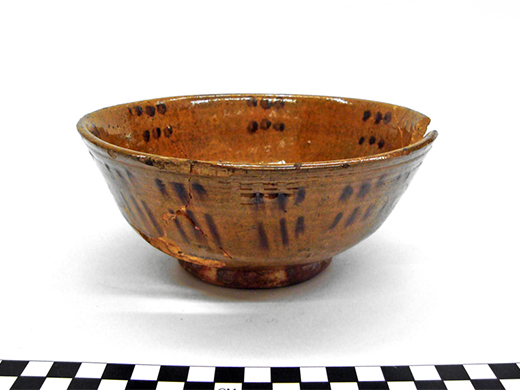
Bowl - Redware. 18th Century.
-
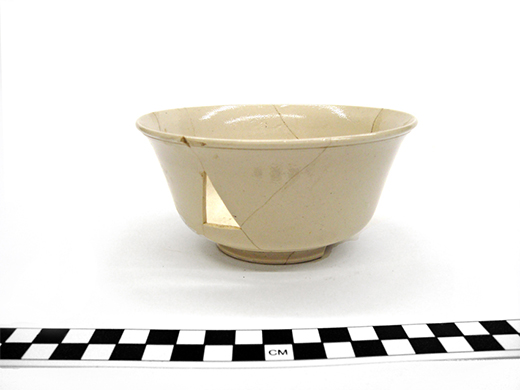
Bowl, White Salt Glazed.
-
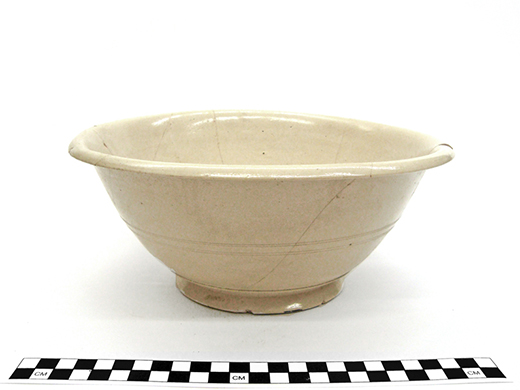
Bowl - Salt-glazed Stoneware, 18th Century.
-
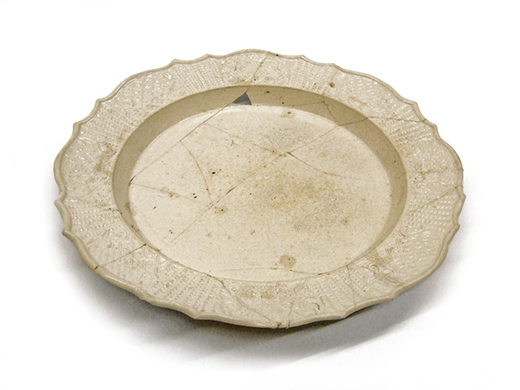
Plate - Salt-glazed stoneware. Diaper, dot, and basket decoration, 18th Century.
-
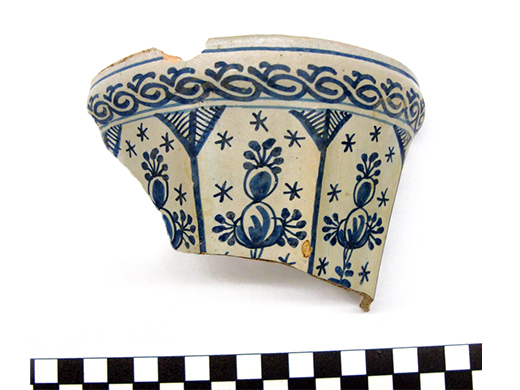
Bowl, Tin Glazed floral.
-
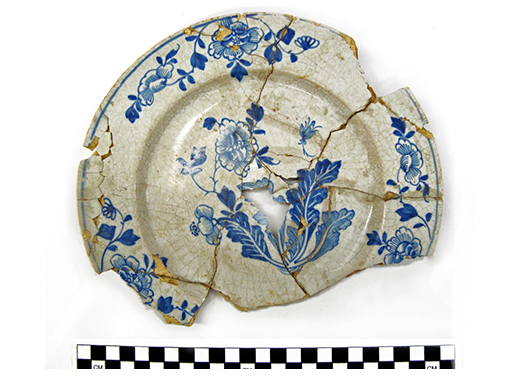
Plate - Tin-glazed earthenware. Hand-painted floral decoration ca. 1730-1740
-

Plate - Staffordshire-type slipware. Combed slip decoration and pie-crust rim.
-

Bowl - Jackfield, Ca. 1740-1775.
-
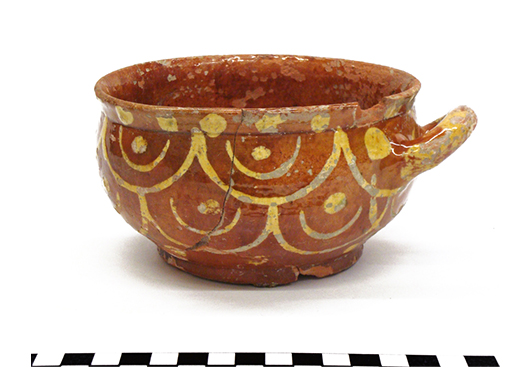
Porringer - Slip-decorated redware, 18th Century.
-
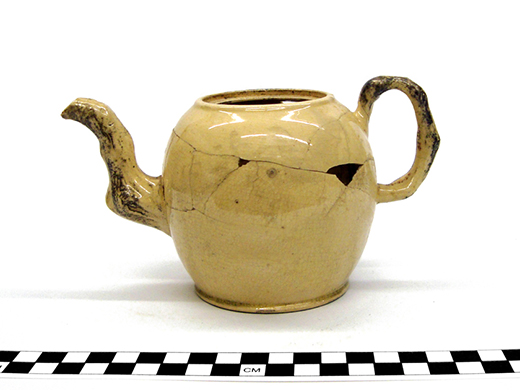
Teapot - Creamware, 18th Century. Tea drinking originated in China and did not become widespread in Europe and the British colonies until the late 17th century.
-
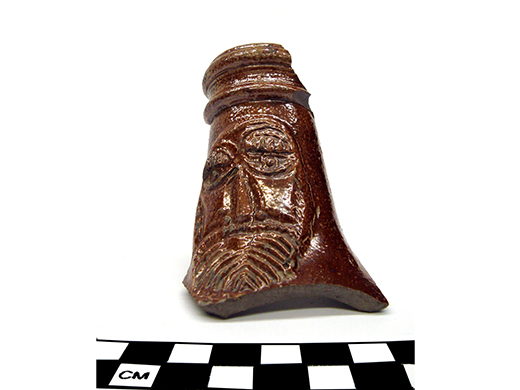
Bartmann bottle - Brown salt-glazed stoneware.
-
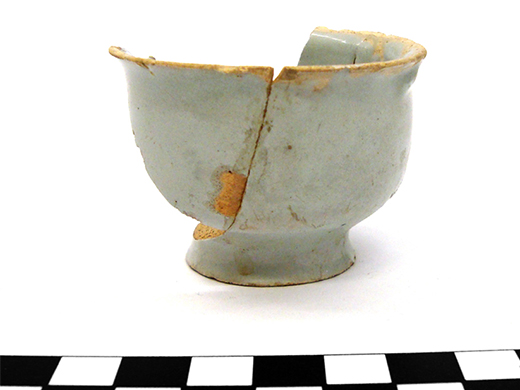
Medicine jar/galley pot - Ca. 1770. Used to mix medicinal ointments.
-
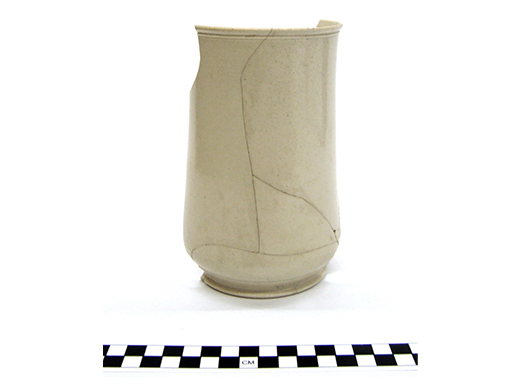
Tankard - Salt-glazed stoneware.
-
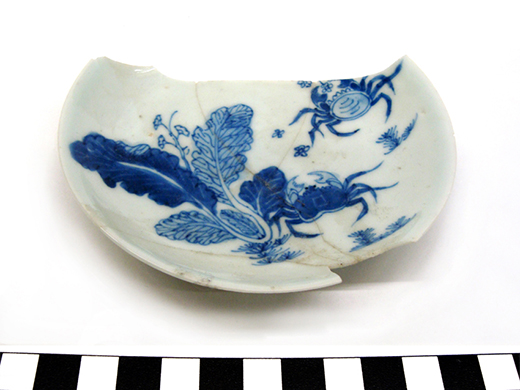
Saucer - Chinese porcelain, crab motif. Ca. 1660-1775. Chinese porcelain was very expensive and heavily regulated by British trade embargoes and tax laws.
-
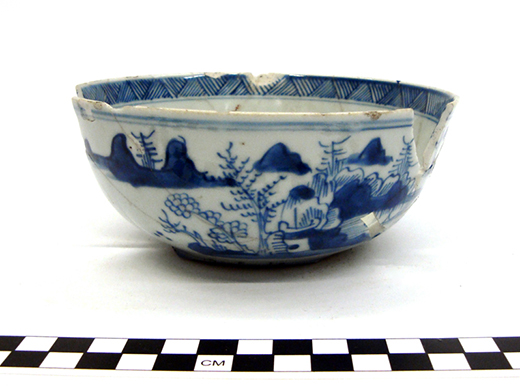
Bowl - Porcelain, Nanking export ware, 1660-1775. Europeans first came to America looking for a shortcut to China. Chinese goods including silk, tea, and fine porcelain were always popular. Nanking porcelain was produced specifically for foreign trade.
-
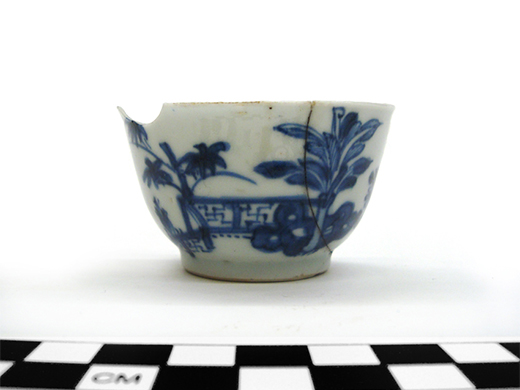
Tea Bowl, Porcelain.
-
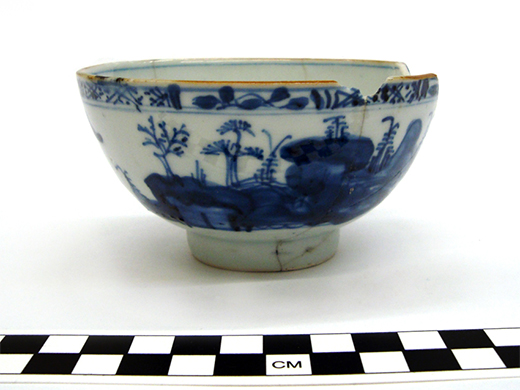
Bowl - Porcelain, Nanking export ware, 1660-1775. Europeans first came to America looking for a shortcut to China. Chinese goods including silk, tea, and fine porcelain were always popular. Nanking porcelain was produced specifically for foreign trade.
-
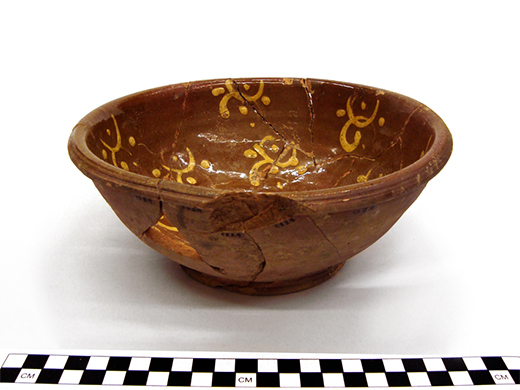
Bowl - Slip-decorated redware.
-
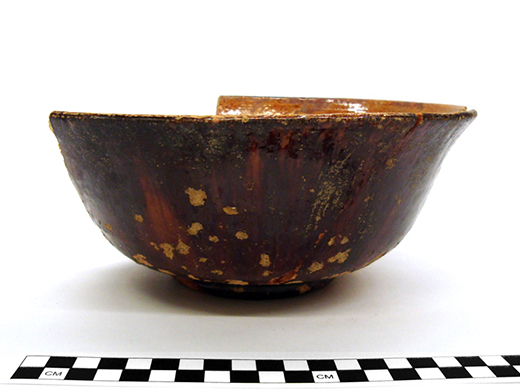
Bowl - Redware.
-
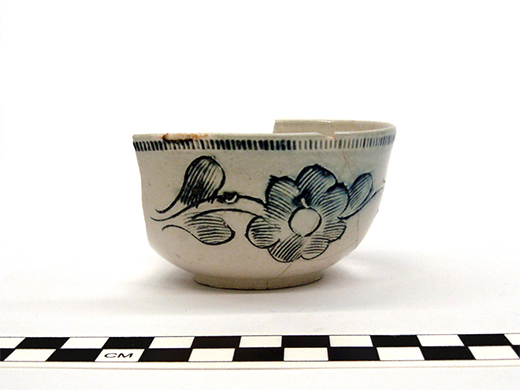
Tea bowl and saucer - Scratch blue stoneware, Ca. 1744-1775.
-
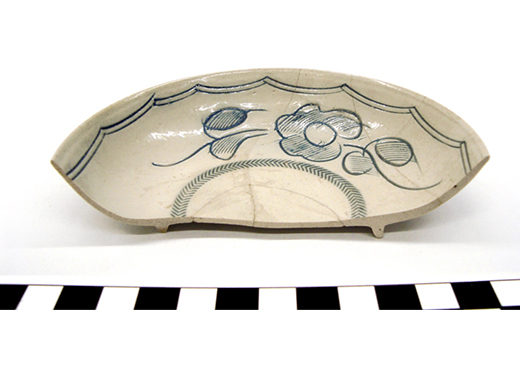
Tea bowl and saucer - Scratch blue stoneware, Ca. 1744-1775.
-
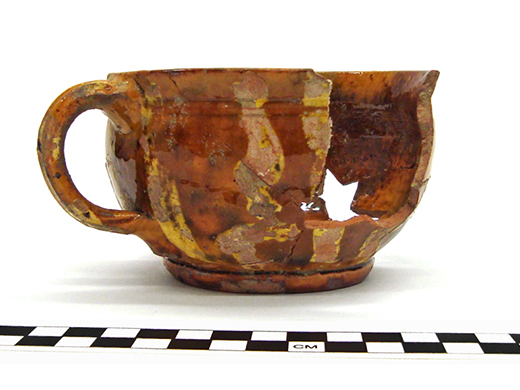
Mug - Slip-trailed redware.
-
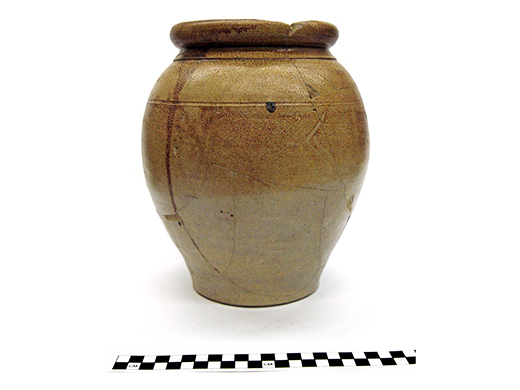
Storage jar - English stoneware. Cordoned decoration at neck.
-
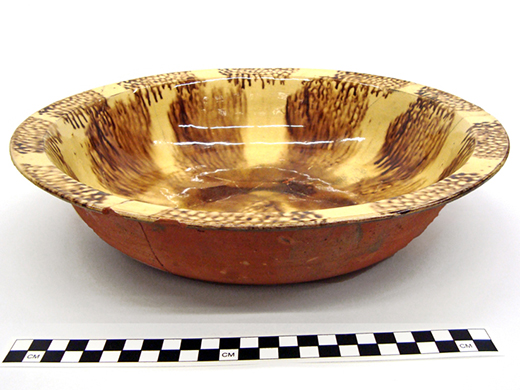
Milk Pan - Slip-decorated redware, ca. 1710-1775. This redware milk pan was used to cool milk, cook, and at times as a wash basin.
-
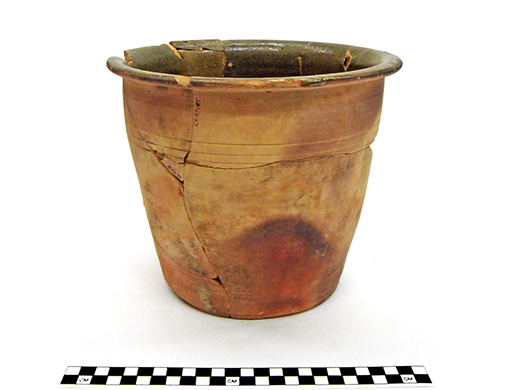
Storage jar - Lead-glazed redware.
-
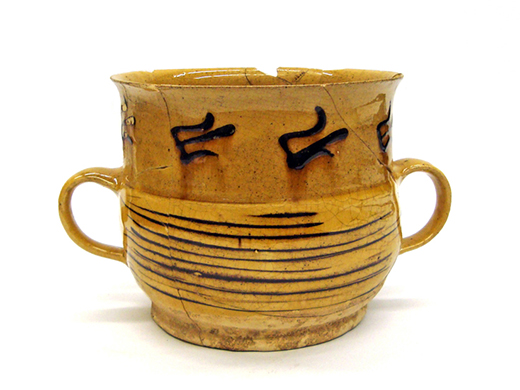
Posset pot - Slip-decorated earthenware, ca. 1750. Posset was a popular colonial beverage made with warm milk and spiced rum. This two-handled vessel could be passed around and shared by guests of the tavern.
-
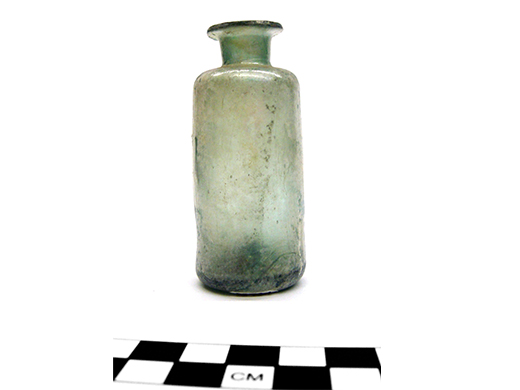
Medicinal bottle - 18th century.
-
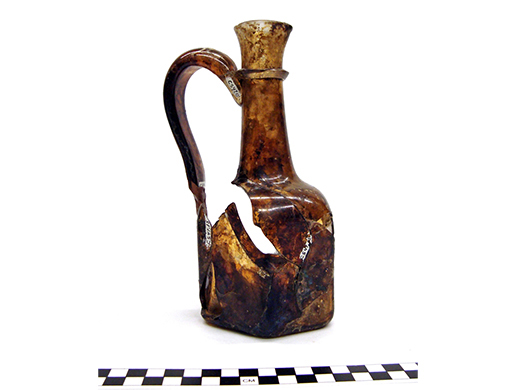
Decanter - Glass, ca. 1725-1745.
-
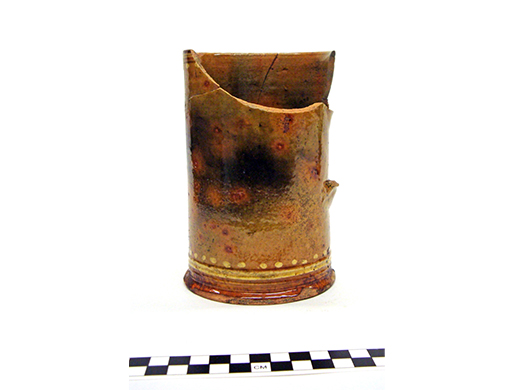
Tankard - Slip-decorated redware. Tavern guests shared tankards filled with beer or ale.
-
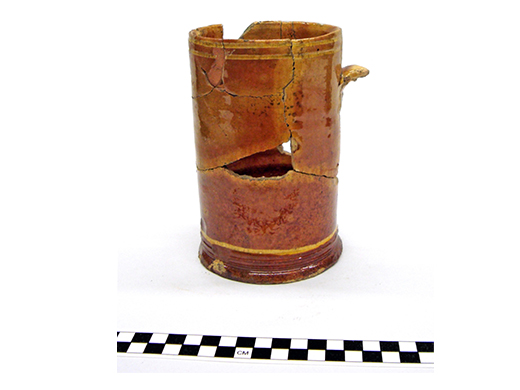
Tankard - Slip-decorated redware. Tavern guests shared tankards filled with beer or ale.
-
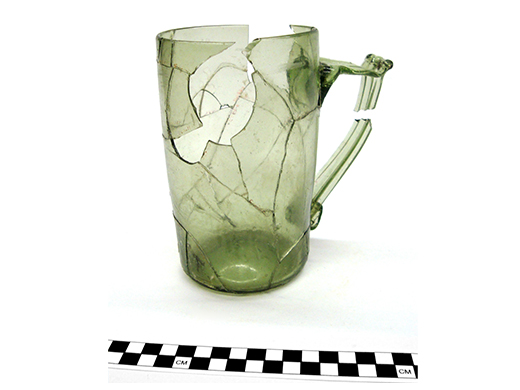
Tankard - Green glass, ca. 1750. Tavern guests shared tankards filled with beer or ale.
-
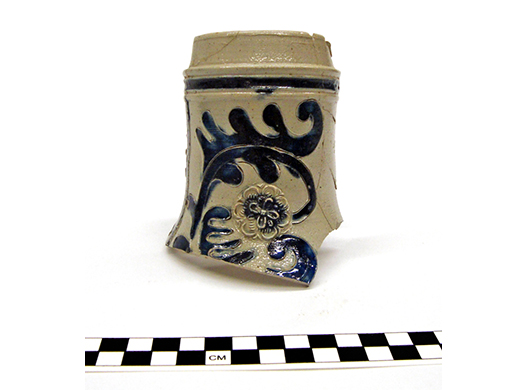
Jug - Westerwald stoneware. Sprig-molded with cobalt decoration.
-
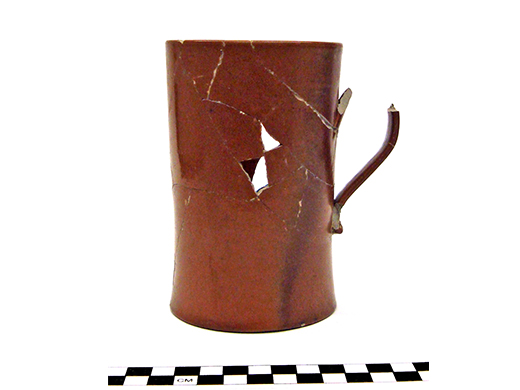
Tankard - Stoneware; Nottingham, England, ca. 1740.
-
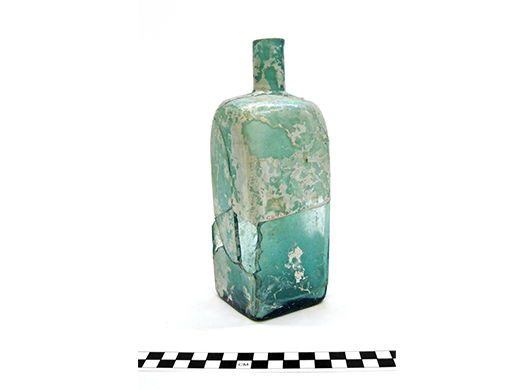
Case bottle - Blue glass, ca. 1750. Square-bodied bottles are known as case bottles. These types of bottles were generally transported and sold in wooden boxes or 'cases' that held up to one dozen bottles.
-
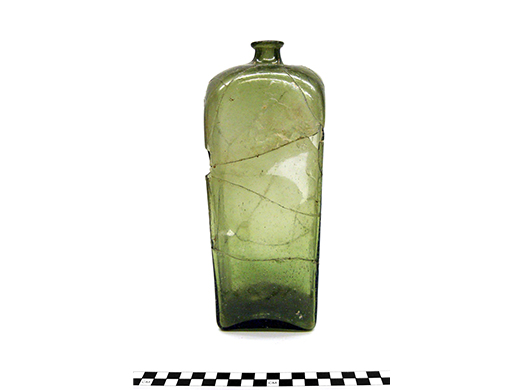
Case bottle - Green glass, ca. 1750. Square-bodied bottles are known as case bottles. These types of bottles were generally transported and sold in wooden boxes or 'cases' that held up to one dozen bottles.
-
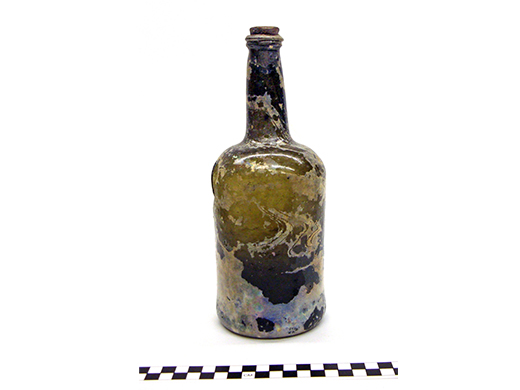
Bottle - Green glass, 18th century. This bottle commonly held wine.
-
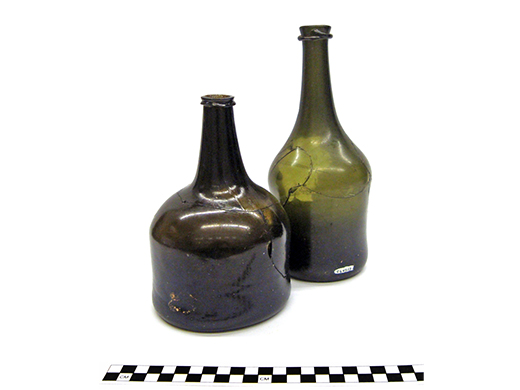
Bottle - Green glass, 18th century. These bottles commonly held wine.
-
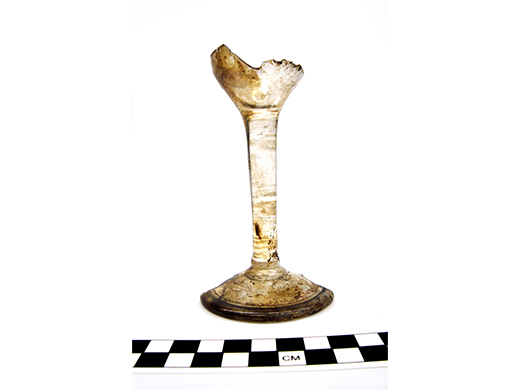
Wine glass - Clear glass, 18th century.
-
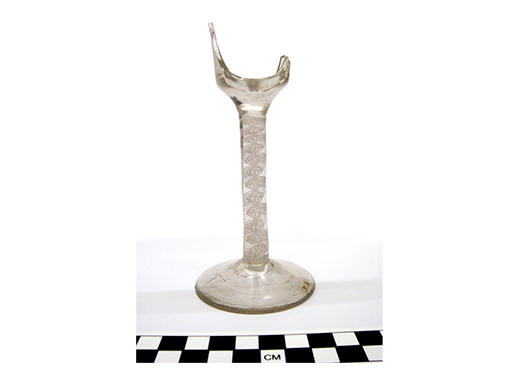
Wine glass - Straight drawn stem with opaque white ribbon twist, ca. 1770.
-
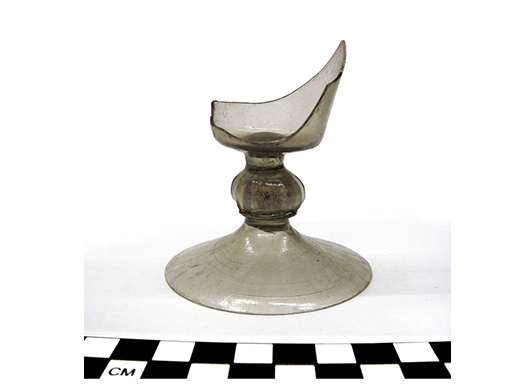
Wine glass - French or Venetian glass, ca. 1680.
-
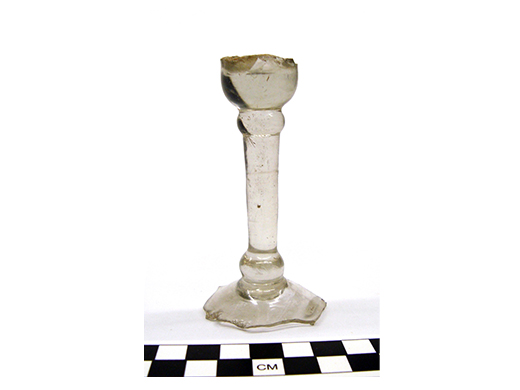
Wine Glass - Clear glass, 18th century. Solid balustroid stem with multiple knobs.
-
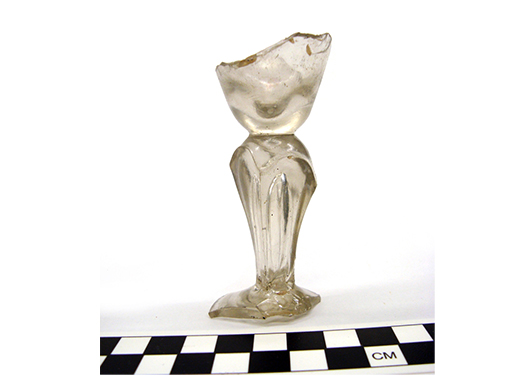
Wine glass - Clear glass, 18th century.
-
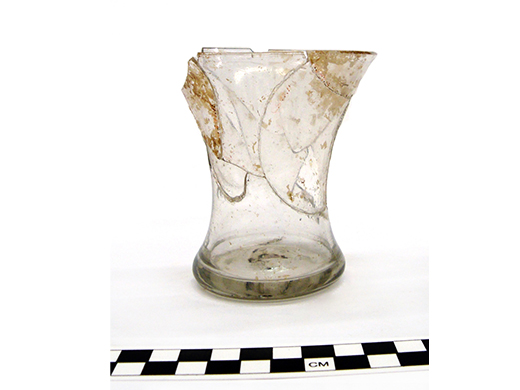
Jelly glass - ca. 1740. Also known as a dessert glass. This glass would be filled with a festive punch such as Cherry Flip.
-
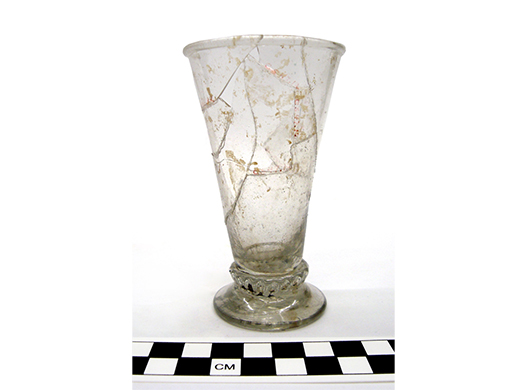
Firing glass - Clear glass, ca. 1740. Used to respond to toasts. Banging this glass on the table could produce a noise like a musket firing.
-
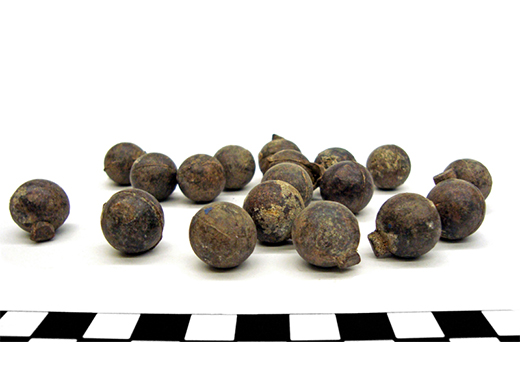
Lead musket balls - .70 caliber, British or American. We can only speculate as to the circumstances surrounding the deposit of these musket balls into the privy. Given the extent of the fighting in the area they may well be associated with the battle of Bunker Hill or the retreat of the colonial forces upon the arrival of the British. Much of the material found in the privy was probably part of the general debris from the houses and yards that was left by the residents who fled Charlestown.
-
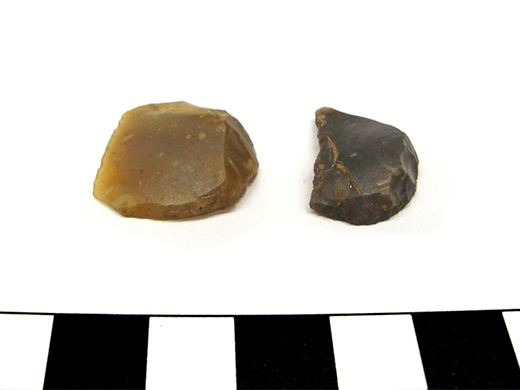
Gun flints - English flint. Flint was clamped in the hammer of a firearm to ignite the powder that propelled the bullet.
-
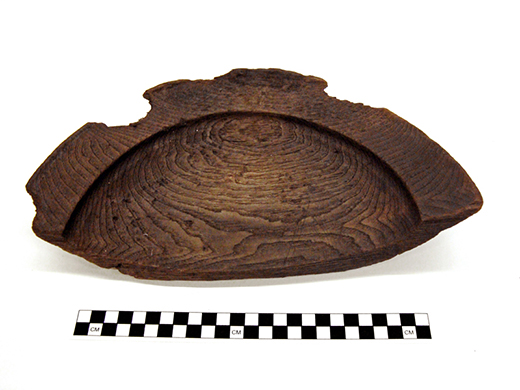
Trencher - Wood, 1630-1775. While wooden trenchers, dishes, and platters were widely available, durable, and inexpensive in colonial America, they are rarely preserved in archaeological sites. In the seventeenth century, people at a table often ate from the same larger trencher and drank from the same tankard or pot.
-
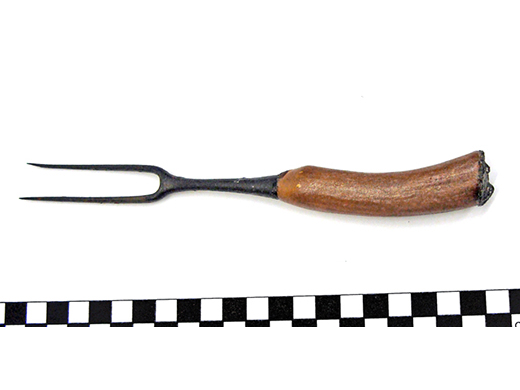
Fork - Iron with bone handle, 1635-1775. It wasn’t until the early 18th century that tables were regularly set with forks. Before that time the only cutlery was knives and spoons. The first fork arrived in America for John Winthrop in 1633. The fork displayed here is for carving and serving meat. The act of lifting food to the mouth with a fork came only when the three-tined fork arrived sometime around 1690.
-
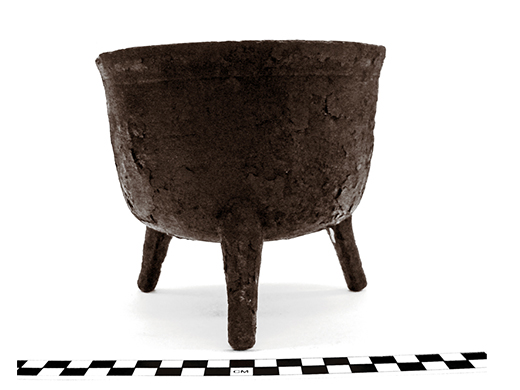
Kettle - Iron, 1635-1775. This kettle has legs that allow it to be placed directly in the fire.